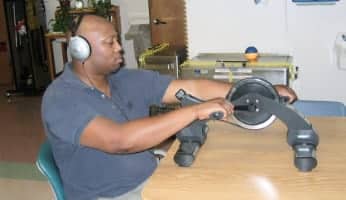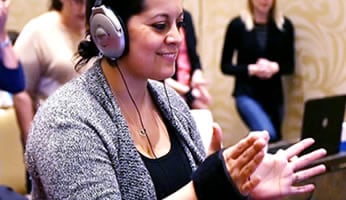Kyle’s Breakthrough: How IM Treatment Enhanced Sensory Processing and Functioning

Home - Testimonials - Pediatric Testimonials - Kyle’s Breakthrough: How IM Treatment Enhanced Sensory Processing and Functioning

Kyle’s Breakthrough: How IM Treatment Enhanced Sensory Processing and Functioning
Kyle is a 10-year-old boy who was diagnosed with Autism Spectrum Disorder and Hypotonia at 3 years of age.
He was later diagnosed with Sensory Processing Disorder at 8 years of age.
His occupational therapy diagnoses are Lack of Coordination and Unspecified Disorder of the Central Nervous System. He is under the care of a neurodevelopmental pediatrician and is on the medication Tenex.
He is a verbal child who has received speech therapy and physical therapy on and off since the time of his ASD diagnosis.
Starting the Interactive Metronome Program
At the time he started Interactive Metronome (IM) sessions, Kyle was also receiving occupational therapy treatment for poor coordination, low arousal, sensory processing difficulties, inattention, auditory processing, and poor handwriting.
Additionally, due to inattention and difficulty with learning, Kyle is home schooled by his mother. He perseverates on movies and television shows, particularly SpongeBob and history-based shows.
It would take Kyle 2-3 minutes to process verbal commands, which were impacting academic performance and social communication.
Kyle’s fine motor skills were being impacted as well, and his handwriting was often illegible, scoring below average in the WOLD sentence-copying test.
On the Sensory Profile questionnaire completed by his parents, Kyle had a “definite difference” in 12 of the 23 processes; a “probable difference” in nine; and “typical performance” in only visual processing and items indicating thresholds for response.
He fell below average on the fine motor precision and manual dexterity subtests of the Bruininks-Oseretsky Motor Proficiency Test – 2nd edition.
Results with IM Treatment
During IM treatment, “best practice methods” were used with preferred toy motivators, sensory-based modifiers such as a therapy ball for vestibular input, and Brain Gym techniques for concentration.
As his progress increased over time and Kyle was able to attend longer to each exercise, challenges were added, such as reading while performing IM exercises.
After 3 months of IM treatment 3 times per week, Kyle made significant improvements.
When his parents gave him the Sensory Profile test again, Kyle had made improvements in multi-sensory and oral sensory processing, emotional/social responses, and behavioral outcomes of sensory processing.
He also jumped up a level on the WOLD Sentence Copying Test, scoring in the average range with improved line placement, sizing, formation, and spacing.
And his parents noticed that he was paying much more attention during his homeschool lessons, especially when they immediately followed an IM session.
Clinically, Kyle showed gains in arousal level, improved initiation of tasks, improved eye contact, and improved fine motor coordination (including handwriting legibility).
These gains helped Kyle function better in social interactions, academic tasks, self-care tasks, and play in his daily life.






